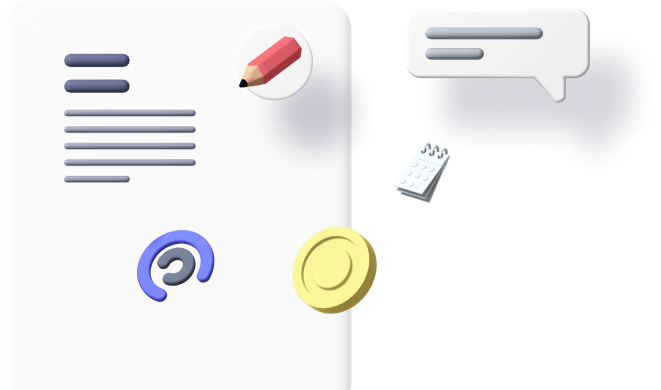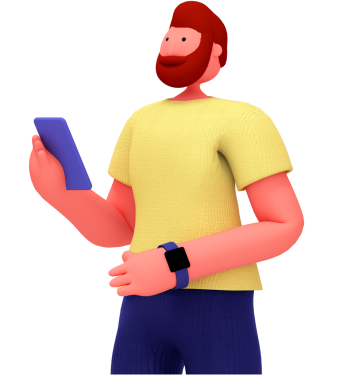
What if you could receive world-class medical care without leaving your home? Moreover, what if artificial intelligence could make that care more accurate, faster, and personalized than ever before? AI-driven telemedicine is revolutionizing healthcare delivery, transforming how patients access medical services and how providers deliver care.
Traditional healthcare systems face mounting challenges: overcrowded hospitals, long wait times, and limited access to specialists. However, AI-driven telemedicine addresses these pain points while delivering superior patient outcomes. In this comprehensive guide, you’ll discover seven game-changing benefits of AI-powered virtual healthcare that could transform your medical experience.
Furthermore, we’ll explore how this technology is reshaping remote patient monitoring, improving diagnostic accuracy, and making quality healthcare accessible to millions worldwide.
Why AI-Driven Telemedicine Matters
The healthcare landscape is experiencing unprecedented transformation. According to the American Medical Association, telemedicine utilization increased by 3,800% during the pandemic and continues to grow at 25% annually. Meanwhile, AI in healthcare is projected to reach $102 billion by 2028.
Additionally, studies show that 76% of patients prefer virtual consultations for routine care, while healthcare providers report 40% improvement in diagnostic accuracy when using AI-assisted tools. These statistics underscore the urgent need for innovative healthcare solutions.
Moreover, rural communities benefit significantly from AI-driven telemedicine, as it bridges the gap where specialist access is limited. Consequently, this technology isn’t just convenient—it’s becoming essential for equitable healthcare delivery.
The 7 Best Benefits of AI-Driven Telemedicine
1. Enhanced Diagnostic Accuracy Through AI Analysis
AI-powered diagnostic tools analyze patient data with remarkable precision. Machine learning algorithms can detect patterns in symptoms, medical images, and patient histories that human practitioners might miss. For instance, AI can identify skin cancer with 95% accuracy compared to 87% for dermatologists alone.
Furthermore, these systems continuously learn from vast medical databases, improving their diagnostic capabilities over time. Consequently, patients receive more accurate diagnoses during virtual consultations, reducing the need for multiple appointments.
2. 24/7 Healthcare Access and Availability
Unlike traditional healthcare settings, AI-driven telemedicine platforms operate around the clock. Patients can access medical consultations, receive symptom assessments, and get treatment recommendations at any time. This proves especially valuable for urgent care situations or patients in different time zones.
Additionally, AI chatbots provide immediate triage, determining whether patients need emergency care, can wait for a scheduled appointment, or require self-care guidance. This ensures appropriate care allocation while reducing unnecessary emergency room visits.
3. Personalized Treatment Plans and Recommendations
AI algorithms analyze individual patient data—including medical history, genetic information, lifestyle factors, and treatment responses—to create highly personalized care plans. This precision medicine approach significantly improves treatment effectiveness.
Moreover, AI can predict potential health risks and recommend preventive measures tailored to each patient’s unique profile. For example, IBM Watson Health has demonstrated success in creating personalized cancer treatment protocols based on patient-specific data analysis.
4. Cost-Effective Healthcare Delivery
AI-driven telemedicine reduces healthcare costs for both patients and providers. Patients save on travel expenses, time off work, and facility fees. Meanwhile, healthcare systems reduce overhead costs associated with physical infrastructure and staffing.
Furthermore, early detection through AI monitoring prevents costly emergency interventions. Studies indicate that remote patient monitoring can reduce hospital readmissions by up to 50%, translating to significant cost savings across the healthcare system.
5. Improved Remote Patient Monitoring Capabilities
Advanced AI sensors and wearable devices continuously monitor vital signs, medication adherence, and health indicators. This real-time data allows healthcare providers to intervene before serious complications develop.
Additionally, AI algorithms can detect subtle changes in patient behavior or health metrics that might indicate emerging problems. Consequently, this proactive approach improves patient outcomes while reducing emergency hospitalizations.
6. Reduced Wait Times and Increased Efficiency
AI streamlines the entire healthcare process, from appointment scheduling to diagnosis and treatment planning. Intelligent scheduling systems optimize provider availability while predictive analytics help anticipate patient needs.
Moreover, AI-powered virtual assistants handle routine inquiries, prescription refills, and basic health assessments, freeing up healthcare professionals to focus on complex cases. This efficiency improvement benefits both patients and providers.
7. Better Healthcare Access for Underserved Populations
AI-driven telemedicine breaks down geographical and socioeconomic barriers to healthcare access. Rural communities, elderly patients with mobility issues, and individuals in developing regions can now access specialist care that was previously unavailable.
Furthermore, multilingual AI translation services ensure language barriers don’t prevent quality care delivery. This democratization of healthcare represents one of the most significant benefits of AI-driven telemedicine.
Common Mistakes to Avoid in AI-Driven Telemedicine
1. Overlooking Privacy and Security Concerns
Many organizations rush to implement AI telemedicine without adequate cybersecurity measures. However, patient data protection must remain paramount. Always choose platforms that comply with HIPAA regulations and employ end-to-end encryption.
Additionally, ensure your telemedicine provider has robust data governance policies and regular security audits to protect sensitive health information.
2. Relying Solely on AI Without Human Oversight
While AI enhances diagnostic capabilities, it shouldn’t replace human medical judgment entirely. Therefore, the most effective AI-driven telemedicine combines artificial intelligence with qualified healthcare professionals who can interpret results and make final treatment decisions.
Moreover, patients should understand when AI is being used in their care and maintain the option to consult with human providers when needed.
3. Ignoring Digital Literacy Requirements
Not all patients are comfortable with technology. Consequently, successful AI-driven telemedicine implementation requires comprehensive patient education and technical support. Providers should offer training sessions and multiple contact methods for assistance.
Furthermore, platforms should be designed with user-friendly interfaces that accommodate varying levels of technological proficiency.
4. Failing to Integrate with Existing Healthcare Systems
Isolated telemedicine platforms create fragmented care experiences. Instead, choose AI-driven solutions that integrate seamlessly with electronic health records and existing healthcare workflows. This ensures continuity of care and prevents important information from being overlooked.
Benefits and ROI of Implementing AI-Driven Telemedicine
Organizations implementing AI-driven telemedicine typically see remarkable returns on investment. Healthcare systems report 30-50% reduction in no-show rates, 25% improvement in patient satisfaction scores, and 40% decrease in administrative costs.
Additionally, providers experience increased patient capacity without proportional increases in staffing costs. For example, one dermatology practice using AI-assisted virtual consultations increased patient throughput by 60% while maintaining high satisfaction ratings.
Moreover, patients benefit from reduced travel time, lower healthcare costs, and improved health outcomes through better access to care. The Mayo Clinic reports that patients using their AI-enhanced telemedicine platform show 23% better medication adherence and 18% improvement in chronic disease management.
Furthermore, healthcare systems implementing comprehensive AI-driven telemedicine programs see significant improvements in population health metrics, particularly in managing chronic conditions like diabetes, hypertension, and mental health disorders.
Conclusion
AI-driven telemedicine represents the future of healthcare delivery, offering unprecedented benefits for patients, providers, and healthcare systems alike. From enhanced diagnostic accuracy to improved access for underserved populations, these seven key benefits demonstrate why this technology is becoming essential rather than optional.
The evidence is clear: organizations and patients who embrace AI-driven telemedicine gain competitive advantages in cost, efficiency, and health outcomes. However, successful implementation requires careful attention to security, integration, and user experience.
Ready to transform your healthcare experience? Contact our telemedicine specialists today to learn how AI-driven solutions can improve your health outcomes while reducing costs and improving convenience.
Frequently Asked Questions About AI-Driven Telemedicine
What is AI-driven telemedicine and how does it work?
AI-driven telemedicine combines artificial intelligence technologies with remote healthcare delivery. It uses machine learning algorithms, natural language processing, and predictive analytics to enhance virtual consultations, improve diagnostic accuracy, and personalize treatment plans. The AI analyzes patient data, symptoms, and medical history to assist healthcare providers in making more informed decisions.
Is AI-driven telemedicine safe and secure for patient data?
Yes, when properly implemented. Reputable AI-driven telemedicine platforms comply with HIPAA regulations and employ advanced encryption, secure data storage, and strict access controls. However, patients should verify that their chosen platform maintains appropriate security certifications and data protection policies.
Can AI-driven telemedicine replace in-person doctor visits completely?
Not entirely. While AI-driven telemedicine excels at routine consultations, chronic disease management, and initial assessments, certain conditions still require physical examinations, procedures, or diagnostic tests that can only be performed in person. The technology best serves as a complement to traditional healthcare rather than a complete replacement.
How accurate are AI diagnoses compared to human doctors?
AI diagnostic accuracy varies by medical specialty and condition type. In some areas like radiology and dermatology, AI can match or exceed human accuracy rates. However, AI works best when combined with human medical expertise rather than operating independently. The most effective approach uses AI to augment healthcare provider capabilities.
What equipment do I need for AI-driven telemedicine consultations?
Basic requirements include a smartphone, tablet, or computer with internet connectivity, camera, and microphone. Some AI-driven platforms may benefit from additional devices like digital stethoscopes, blood pressure monitors, or wearable health trackers that can transmit data directly to your healthcare provider for more comprehensive assessments.
















